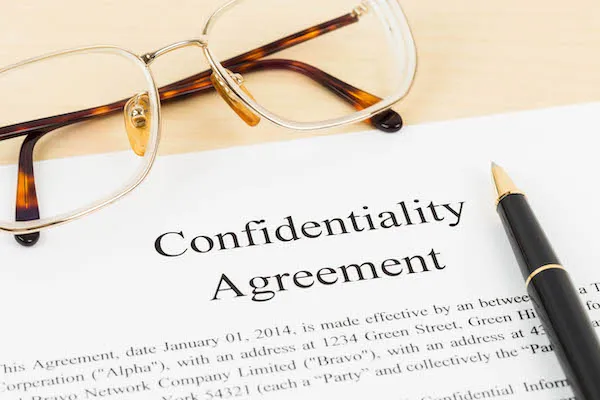When it is necessary to communicate crucial sensitive information with business partners as part of the course of business, a confidentiality agreement for business partners is employed.

A confidentiality agreement for business partners is used when you need to communicate sensitive information with contractors, suppliers, funders, and other professionals as part of the normal course of business. This is sometimes referred to as a nondisclosure agreement (NDA). Signing this agreement with partners provides you with legal redress if intellectual information is stolen and utilised.
Table of Contents
What is the purpose of a Confidentiality Agreement?
The content of this sort of agreement indicates that the other party promises not to divulge to a third party any information gained during the course of business. A non-disclosure agreement (NDA) is legally binding. Processes, trade secrets, recipes, technical specifications, chemical formulae, client lists, and company strategies are all common objects covered by an NDA.
Any component of your company that you want to keep private may be safeguarded. For example, if you have created a new product and want to acquire a production estimate, you may request that the manufacturing business sign a confidentiality agreement so that they do not discuss your design with others or benefit from it.
Confidentiality agreements are also beneficial when hiring new staff or negotiating with possible investors or business partners.
Different Kinds of Confidentiality Agreements
Most confidentiality agreements may be tailored to your company’s specific requirements. You may, however, choose from a few different forms of NDAs.
A prior confidentiality agreement is often used by two firms participating in a merger or acquisition (PCA). This enables the company making the acquisition to evaluate detailed information about the assets and obligations of the company being bought. If the purchase is not completed, this information must be kept secret.
A one-way NDA is used when one company provides information to another company or person. When two firms share information with one another, a two-way NDA is employed. These are also known as unilateral or bilateral NDAs.
When three or more parties share information, a multilateral NDA is employed.
The Essentials of an NDA Agreement
The following parts and clauses should be included in your confidentiality agreement:
Indicate the disclosing party, which is the person or company that is revealing the sensitive information. This does not have to be the person that owns the information in issue; it might be someone who is legally allowed to divulge the information for a specified reason with consent.
Indicate the receiving party, which is the person or company who will be receiving the secret information. This is often a person or small department inside a major firm, allowing you to avoid tying up a whole corporation with information that hasn’t even been shared with everyone. For secrecy agreements, many organisations choose one person as the signor. Unless the NDA indicates otherwise, those inside an organisation listed as a receiving party may disclose the information exclusively with other members of the organisation.
Declare the agreement’s purpose. Use wording that explains how the NDA-covered material may be utilised in the context of the agreement.
Keep disclosure restrictions in mind, even if the receiving party thinks you have a confidentiality agreement with a third party that covers the same material. Unless expressly stated in the agreement, this form of disclosure is prohibited.
Indicate any exclusions to the confidentiality agreement’s coverage of information. This typically includes information that was already in the public domain, information that the receiving party had prior to the agreement, information that has since entered the public domain, information that the receiving party independently discovered, or information that is legally required to be disclosed.
You could wish to insert a non-grant of rights provision at the end that states that signing a confidentiality agreement does not necessarily imply consent to engage into any future contract or arrangement with the receiving party, including rights or licence to the given information.
Concerns Regarding Confidentiality Agreements
Even if the other party has signed a legally enforceable secrecy agreement, suing him or her for breach of contract is expensive and difficult. You must have proof that the company or person in issue has revealed the information, and you must seek a court to stop them from doing so.
Make certain that the agreement specifies the specific information that must be kept secret. Too broad agreements are difficult to enforce in court.
